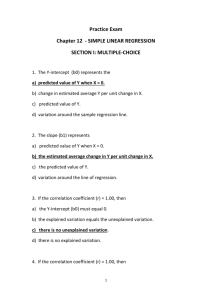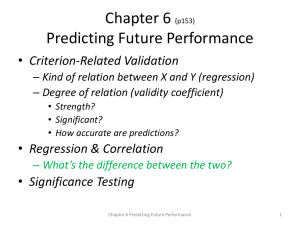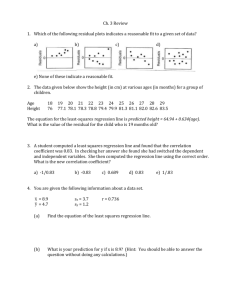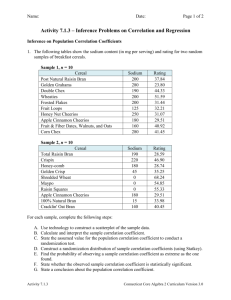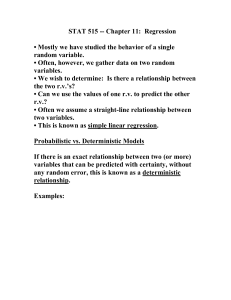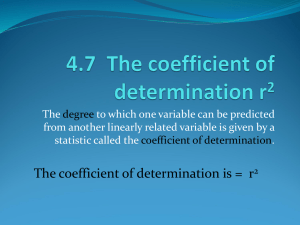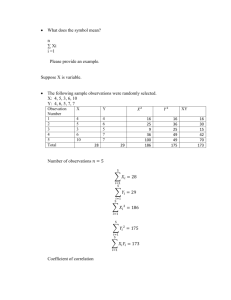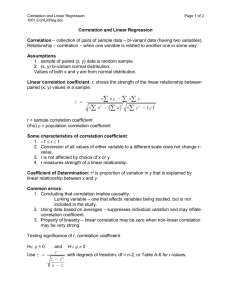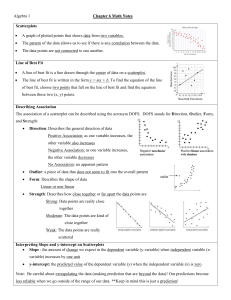Observed responses are denoted y and are the
advertisement
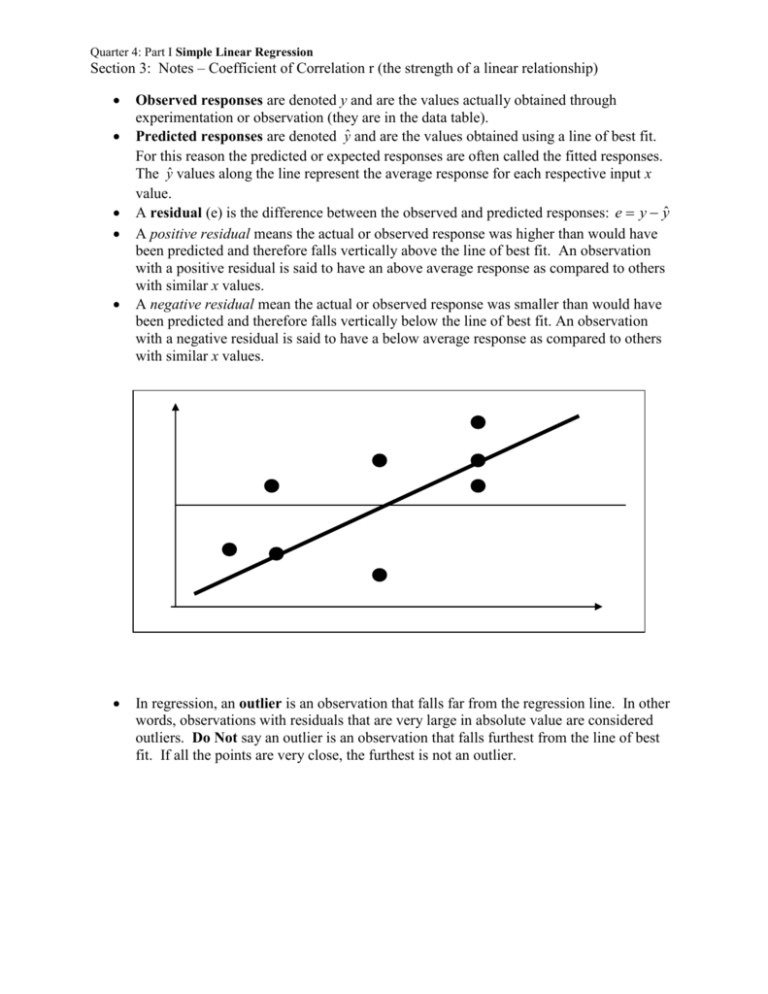
Quarter 4: Part I Simple Linear Regression Section 3: Notes – Coefficient of Correlation r (the strength of a linear relationship) Observed responses are denoted y and are the values actually obtained through experimentation or observation (they are in the data table). Predicted responses are denoted ŷ and are the values obtained using a line of best fit. For this reason the predicted or expected responses are often called the fitted responses. The ŷ values along the line represent the average response for each respective input x value. A residual (e) is the difference between the observed and predicted responses: e y yˆ A positive residual means the actual or observed response was higher than would have been predicted and therefore falls vertically above the line of best fit. An observation with a positive residual is said to have an above average response as compared to others with similar x values. A negative residual mean the actual or observed response was smaller than would have been predicted and therefore falls vertically below the line of best fit. An observation with a negative residual is said to have a below average response as compared to others with similar x values. In regression, an outlier is an observation that falls far from the regression line. In other words, observations with residuals that are very large in absolute value are considered outliers. Do Not say an outlier is an observation that falls furthest from the line of best fit. If all the points are very close, the furthest is not an outlier. Quarter 4: Part I Simple Linear Regression Section 3: Notes – Coefficient of Correlation r (the strength of a linear relationship) A linear relationship between two variables is considered perfect when all the points are perfectly aligned along some line. We often see, however, that the points deviate or vary from some line that best fits the points. The further these points deviate from the best-fit line, the weaker the relationship. A coefficient of correlation measures the strength and direction of a linear relationship. The coefficient of correlation is denoted r and ranges from –1 to +1, where –1 represents a perfect negative linear relationship and +1 represents a perfect positive relationship. If there is virtually no linear relationship, the coefficient of correlation will equal 0. r is not to be confused with the slope, but both indicate the direction of the linear relationship. r can be obtained using formulas or by turning a special feature on in the calculator. The formula for calculating the coefficient of correlation r is as follows: r b1 sx sy b1 slope; s x sample standard deviation for the x values To enable the TI to report r [TI84 Catalog: Diagnostic ON enter] The coefficient of correlation r will now appear every time you ask your calculator to perform the regression equation (line of best fit) EXAMPLE Order the following linear relationships from weakest to strongest: Match the scatterplot to the coefficient of correlation: http://www.stat.uiuc.edu/courses/stat100/java/GCApplet/GCAppletFrame.html



